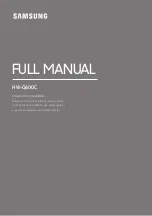
- 5 -
Issue 1
The right hand of the screen displays the two ambient noise sections.
ANS
displays the
returned signal from the sensor; this is a dynamic figure and will vary between -00 and -12
with the ambient noise. The figure –00 represents no attenuation, whereas –12 represents
the maximum (20dB) of attenuation.
Sens
is the sensitivity of the noise sensor, the user enters this figure. The figure 00 will
disable the ANS, i.e. OFF, maximum audio output. The figure 01 will enable the ANS and
give the minimum sensitivity from the BVRAMB noise sensor; the maximum sensitivity that
can be entered is 15, (fig 5).
Fig 5
OUT 01
CHIME SURV
A=10
B=10
ANS
(-00
00
Out
10
2OK
A + B + Res
Sens
00
Before making adjustment to the ANS it is important that the Surveillance Monitored is
switched off, otherwise the ANS will detect this as a signal and freeze the output.
Simply reduce
SURV Out
to read
00
(fig 6).
Fig 6
OUT 01
CHIME
SURV
A=10
B=10
ANS
(-00
00
Out
00
2OK
A + B + Res
Sens
00
Establish that the BVR20 is providing the maximum output as demanded by site conditions,
and as described above.
In theory, if the ambient noise is at it’s loudest, then the announcements should remain
around 10dB above the ambient level. Once set the, the loudspeaker volume will
automatically adjust to the ambient noise level in that zone, from maximum output or to a
minimum of 20dB of attenuation, (fig 7).
Fig 7
OUT 01
CHIME SURV
A=10
B=10
ANS
(-10
00
Out
10
2OK
A + B + Res
Sens
05
Note: Once settings have been adjusted, re-enter the original Surveillance Monitor (SURV)
figure, always return the configuration key to the anti clockwise position.


































